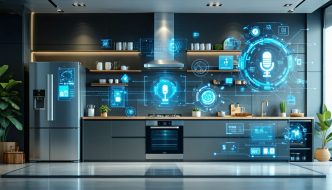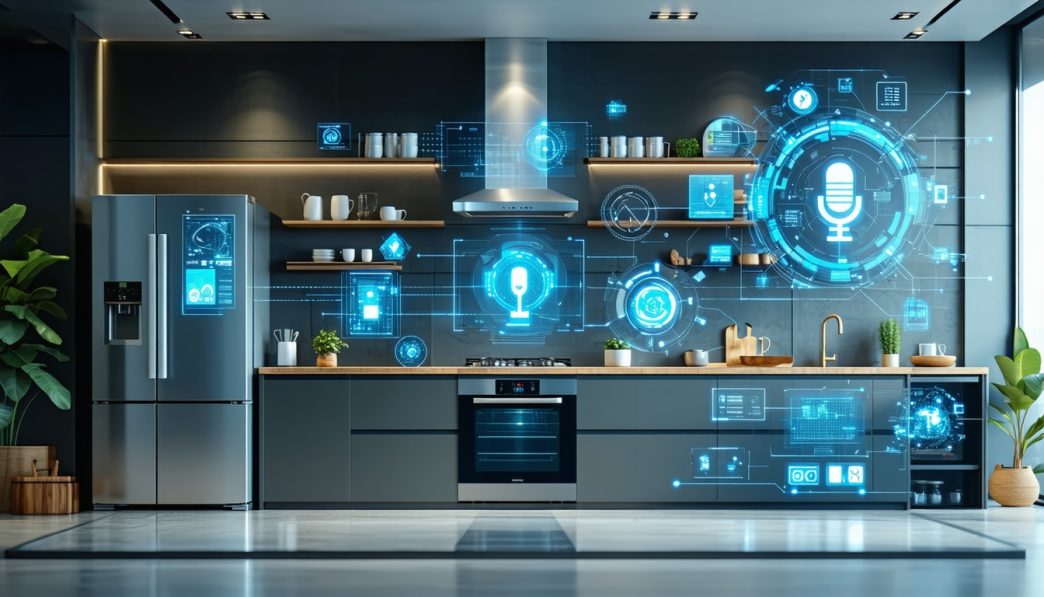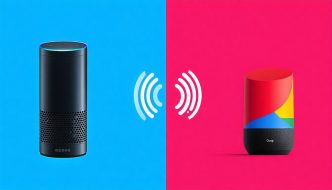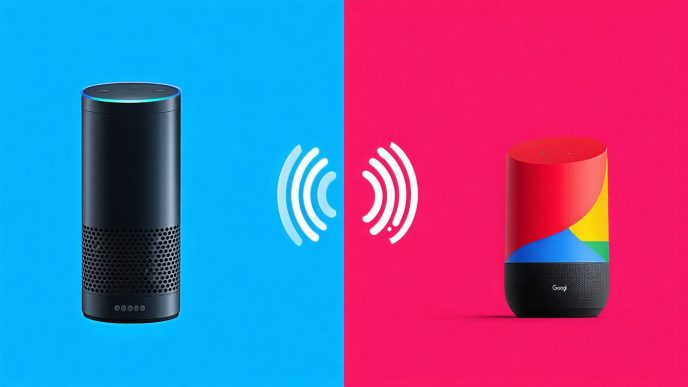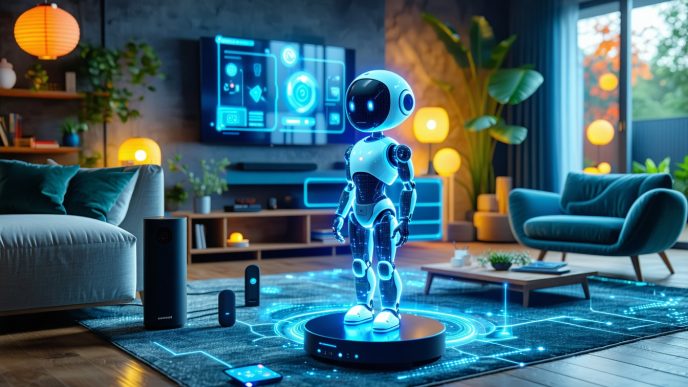The Evolution of Home Appliances
Introduction to AI Assistants in Appliances
Over the years, home appliances have undergone significant transformations driven by technological advancements. The integration of AI assistants in appliances marks a pivotal evolution in how households operate. These intelligent systems, capable of performing tasks autonomously, enhance user experiences by providing convenience and efficiency. AI assistants in appliances can optimize daily routines, manage tasks, and create a more seamless living environment.
As smart home adopters increasingly seek devices that simplify their lives, AI integration becomes essential. These assistants can connect with various appliances, enabling voice commands and automated processes. Many individuals are already familiar with AI technologies such as voice powered robots or digital assistants like Alexa and Google Assistant. Their potential lies not only in smart speakers but also in everyday appliances that contribute to creating a streamlined home environment.
Benefits of AI-Enabled Appliances
The advantages of incorporating AI into appliances are numerous. From energy efficiency to enhanced functionality, these smart devices provide a plethora of benefits for modern households.
| Benefit | Description |
|---|---|
| Energy Efficiency | AI-enabled appliances can optimize energy usage based on user habits. Smart fridges can adjust their cooling patterns, leading to energy savings. |
| Convenience | With voice control and smart integrations, users can manage appliances from anywhere, eliminating the need for manual input. |
| Time-Saving | Automation in tasks like cooking, cleaning, and food management frees up time for users to focus on other priorities. |
| Customization | AI assistants can learn preferences and habits, delivering tailored recommendations for cooking, cleaning, and home management. |
| Support for Elderly and Kids | Devices can assist with daily tasks, providing reminders, and helping to keep elderly individuals safe or kids engaged. Explore more about AI assistants for elderly support and AI assistants and kids. |
By leveraging the capabilities of AI in appliances, users can improve their home environment significantly. The rise of AI shows promise in enhancing the overall quality of life while making tasks easier and more efficient. For more information about the interplay of AI and smart homes, refer to our article on AI assistants and smart homes.
Smart Fridges with AI
Smart fridges have revolutionized the way households manage food and appliances by integrating advanced technology into everyday life. These appliances not only keep food fresh but also provide a range of features that enhance convenience and efficiency.
Features and Functions of AI-Enabled Fridges
AI-enabled fridges come equipped with a variety of features designed to improve user experience. Some of the key functions include:
| Feature | Description |
|---|---|
| Inventory Management | Keeps track of available ingredients and notifies users when food items are running low or nearing expiration. |
| Smart Lists | Generates shopping lists based on inventory and users’ preferences, often syncing with mobile devices. |
| Recipe Suggestions | Provides meal ideas based on available ingredients, allowing users to create meals without having to shop. |
| Temperature Control | Adjusts internal temperatures based on the type of food stored, optimizing freshness and reducing waste. |
| Touch Screen Display | Offers a user-friendly interface for managing contents, recipes, and connectivity with smart home systems. |
These features combine to create an appliance that not only stores food but also assists in meal planning and disrupts traditional cooking dynamics.
Advantages of Having a Smart Fridge
The integration of AI assistants in appliances like smart fridges offers numerous advantages for tech-savvy families and professionals. Key benefits include:
| Advantage | Description |
|---|---|
| Enhanced Convenience | Automatic inventory tracking and recipe suggestions simplify meal preparation. |
| Reduced Food Waste | Alerts about expiring items help users utilize what they have before it goes bad. |
| Energy Efficiency | Smart fridges can optimize energy consumption based on usage patterns, reducing electricity costs. |
| Improved Organization | Smart lists and inventory management streamline shopping and help keep kitchens organized. |
| Connectivity | Integration with other smart home devices allows for seamless control and efficiency, supporting a more automated lifestyle. |
Smart fridges represent a significant step forward in kitchen technology, combining everyday functionality with the latest advancements in AI assistants. Their ability to assist with meal preparation and food management makes them valuable for modern households.
Vacuum Cleaners Integrated with AI
How AI Enhances Vacuum Cleaners
The integration of AI in vacuum cleaners has transformed the way they operate. These smart devices are equipped with advanced sensors and algorithms that enable them to navigate and clean efficiently. AI technology allows vacuum cleaners to recognize different floor types, avoiding obstacles and adjusting cleaning modes accordingly.
Key features that highlight how AI enhances vacuum cleaners include:
- Smart Mapping: AI-powered vacuums create a virtual map of the home. This enables efficient cleaning routes and helps avoid areas that have already been cleaned.
- Object Recognition: Advanced models can identify furniture and other obstacles, reducing the chances of getting stuck.
- Scheduling and Remote Control: Users can set schedules for cleaning sessions through mobile apps or voice commands, making it easier to maintain a clean home.
In addition, AI-equipped vacuum cleaners continually learn from their cleaning patterns and user preferences. Consequently, they provide a more tailored cleaning experience, adapting to specific household needs over time.
Efficiency and Convenience with AI in Cleaning
The efficiency and convenience provided by AI technology in vacuum cleaners are notable. The following table outlines the advantages that users experience when employing AI-enhanced models:
| Feature | Benefit |
|---|---|
| Time-Saving | Automates cleaning tasks, freeing time for other activities. |
| Multi-Surface Cleaning | Adapts to various surfaces like carpets and hardwood, ensuring thorough cleaning. |
| Self-Charging | Often returns to its charging dock autonomously, ensuring it remains ready for the next cleaning session. |
| Data Collection | Tracks cleaning statistics and user preferences, providing insights for better performance. |
| User-Friendly | Can be controlled via voice commands, integrating seamlessly with other ai assistants. |
AI in vacuum cleaners offers a significant shift towards automation and smarter home management. Users not only enjoy cleaner spaces but also the convenience that comes with smart technology, enhancing their overall home experience. For more insights into AI in home environments, explore our article on ai assistants and smart homes.
AI-Driven Ovens
As households embrace the convenience of technology, AI-driven ovens are becoming an essential component in modern kitchens. These smart ovens incorporate advanced features that streamline cooking tasks and provide valuable assistance to users.
The Role of AI in Ovens
AI technology in ovens empowers users to achieve professional results with ease. By leveraging sensors and machine learning algorithms, these ovens can automatically adjust cooking times, temperatures, and methods based on the type of food being prepared.
For instance, many AI-enabled ovens can recognize specific dishes and suggest optimal settings, reducing guesswork for the user. Beyond simply adjusting heat, these ovens can monitor food progress through built-in cameras, allowing users to check on their meals remotely via smartphone apps.
| Feature | Description |
|---|---|
| Auto-Temperature Adjustment | Adjusts the temperature based on the food type. |
| Cooking Guidance | Provides step-by-step instructions for various recipes. |
| Food Recognition | Identifies the dish being cooked and optimizes settings. |
| Remote Monitoring | Allows users to check cooking progress via an app. |
Cooking Assistants in Modern Ovens
Cooking assistants in AI-driven ovens enhance the overall culinary experience. These features often work in tandem with AI assistants like Alexa or Google Assistant, allowing for voice activation and control. Users can issue voice commands to preheat the oven, set timers, or even ask for recipe suggestions.
By integrating these cooking assistants, AI ovens not only improve efficiency but also ensure that users feel confident while trying new recipes. Through voice commands and app integration, cooking becomes a more interactive and engaging activity.
| Assistant Features | Benefits |
|---|---|
| Voice Activation | Enables hands-free operation for multitasking. |
| Recipe Suggestions | Offers tailored recipes based on available ingredients. |
| Timer Alerts | Sends notifications when cooking is complete. |
AI-driven ovens represent a significant advancement in cooking technology, making meal preparation easier and more intuitive. Their ability to provide real-time guidance and adapt to user interactions exemplifies how AI assistants in appliances can transform everyday tasks into streamlined, enjoyable experiences. As technology progresses, the integration of AI in kitchen appliances will continue to evolve, offering even more sophisticated solutions for home chefs.
Interconnectivity and Integration
The rise of AI assistants in appliances has transformed the way households operate. Embracing technology fosters seamless interactions among devices, creating a cohesive smart home environment.
Seamless Interactions Among AI Appliances
AI-enabled devices are increasingly designed to communicate with each other, improving user experience. Smart fridges, vacuum cleaners, and ovens can coordinate tasks and share information, streamlining daily activities. For example, a smart fridge can notify a vacuum cleaner to start cleaning once it detects that the kitchen is clear, eliminating obstacles during operations.
| Appliance Type | Interaction Capability | Use Case |
|---|---|---|
| Smart Fridge | Sends notifications to other devices | Telling vacuum to clean when kitchen is clear |
| AI Vacuum | Receives commands from other appliances | Initiating cleaning based on fridge notifications |
| Smart Oven | Adjusts cooking times based on meal prep | Communicating with fridge for ingredient readiness |
Furthermore, integrating cutting-edge voice recognition technology allows users to control multiple devices with simple vocal commands. This feature enhances convenience, making it easier to manage various tasks throughout the home.
Creating a Smart Home Ecosystem
The concept of a smart home ecosystem signifies a network of interconnected devices that work synergistically. AI assistants play a vital role in this ecosystem, enabling appliances to perform more functions efficiently. Smart home standards allow appliances to be compatible with various platforms, such as Google Assistant and Alexa.
| Ecosystem Component | Benefits |
|---|---|
| Central AI Hub | Manages interactions among devices, creating efficiency |
| Cross-Device Compatibility | Ensures seamless functioning, regardless of brand |
| Automation Routines | Sets triggers for tasks based on user preferences |
With automation routines, users can customize specific scenarios, such as scheduling their vacuum to clean while the oven preheats for dinner. This integration not only simplifies household tasks but also reduces the time and energy expended on routine activities.
The use of AI assistants in appliances ultimately enhances daily life by fostering efficiency and convenience. As the connected home continues to evolve, the integration capabilities among devices will expand, paving the way for smarter living spaces. For more on how AI shapes smart environments, explore the article on ai assistants and smart homes.
As technology progresses, the collaborations between various types of AI-driven appliances will redefine home automation, ensuring that smart home adopters benefit from continuous advancements in convenience and interactivity.
Future Possibilities
Innovations in AI-Driven Appliances
The landscape of home appliances is rapidly changing as innovation continues to drive advancements in AI technologies. Future AI assistants in appliances will likely incorporate machine learning, allowing them to adapt to user preferences and behaviors over time.
One significant area of development is the integration of advanced sensors. These sensors will enable appliances to gather data about their environment and user habits, leading to more personalized experiences. For instance, smart fridges may autonomously track food inventory and suggest recipes based on available ingredients.
Another notable innovation is the enhanced voice recognition capabilities in appliances. As AI technology evolves, voice-powered robots and appliances will understand and respond to a wider range of commands with greater accuracy. This improvement can significantly enhance usability and convenience, making interaction seamless.
The following table outlines some anticipated innovations in AI-enabled appliances:
| Appliance Type | Expected Innovations |
|---|---|
| Smart Fridges | Advanced inventory tracking, recipe suggestions |
| Vacuum Cleaners | Improved mapping and autonomous cleaning routes |
| Ovens | Real-time cooking adjustments based on user feedback |
| Thermostats | Energy optimization tailored to user routines |
Predictions for the Future of AI in Homes
Looking ahead, the integration of AI assistants into home appliances is expected to create a more interconnected living environment. As appliances communicate with one another, they will serve as part of a comprehensive smart home ecosystem.
Predictions indicate that by 2030, a significant majority of households will utilize multiple AI devices working in tandem. For example, cooking a meal may involve the fridge suggesting ingredients, the oven preheating, and the vacuum cleaner ensuring a clean environment—all initiated via simple voice commands.
Incorporating AI assistants will also enhance safety and security features in smart homes. Appliances may alert homeowners of abnormal activities or potential hazards, providing an additional layer of protection.
The following table summarizes key predictions for the future of AI in residential settings:
| Future Development | Description |
|---|---|
| Increased Interconnectivity | Appliances working together for user convenience |
| Enhanced Personalization | AI learns user habits for tailored experiences |
| Advanced Security Features | Proactive alerts and safety measures |
| Sustainability Initiatives | Energy-efficient practices driven by AI analytics |
The evolution of AI in appliances not only aims to enhance everyday tasks but also addresses broader issues like sustainability and safety. As technology progresses, the role of AI assistants in appliances will continue to transform how individuals interact with their home environment. For further insights on AI assistants in smart homes, visit our article on ai assistants and smart homes.

